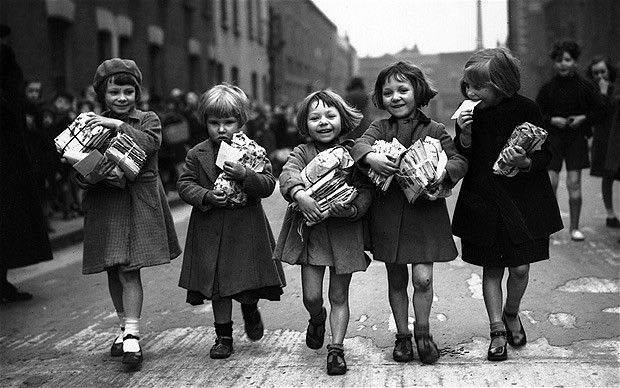Clara Ellen Grant and the Farthing Bundles

Clara was a local head teacher at a school in Bow, whose devout Christian faith inspired her to dedicate her life to tackling child poverty head-on in Bromley-by-Bow.
Born into a well-to-do Wiltshire family in 1867, she completed her teacher training at Salisbury Diocesan Training College in 1886. Her first job was two years later, as a teacher in a church school in a Wiltshire village. In 1890 she became head teacher at a school in Hoxton, followed by a brief and unhappy period teaching at a boarding school.
In 1900 she became head teacher at Devons Road Infant School in Bromley-by-Bow, where she facilitated hot breakfast meals for the students, paying for porridge, milk, bread and butter. The district was undoubtedly one of the most dangerous in the city. However, where others saw danger and depravation, Clara saw people who endured abject destitution and hardship, but who deserved respect and dignity. To that end she set out to improve their lives, and particularly those of young children, through education.
Lacking the basic necessities of clean drinking water, shoes and clothing, a staggering one in five children born in the East End at the time did not survive to meet their first birthday.
In 1907 she established the Fern Street Settlement in converted terraced cottages at Bow Common, an organization that still exists, run by All Hallows Bow Church and provides children’s activities, family learning, advice, emergency support, and community action projects.
At its inception, it gave the children something to play with and to play together. It offered the first school nurse in London as well as nap time for the smaller children. The settlement was linked to the Voluntary Health Visiting Association, where a nurse would make a monthly visit for a year to babies born to families with children at the school.
Known affectionately as the Bundle Woman of Bow, she established the Clara Grant Primary School, health homes visits, a free library for poor families and breakfast clubs for poor children.
Her idea for the Farthing Bundles was simple but hugely effective: she provided gifts during a weekly ceremony where in exchange for a farthing, the smallest coin in circulation at the time’ young children would be given a bundle of gifts.
Clara described the farthing as “A most important coin of the realm on Bow Common. A child with a ¼ d. of sweets was relatively rich, but when there were two or three children and one farthing, the obliging shop man would pack the sweets into two or three little packets and so made more little people happy, and also relieved them of the responsibility of sharing them round.”
The exchange of a coin was deliberate – it gave the children a feeling of dignified self-worth – an assertion that they weren’t mere charity cases. Up to 500 children would queue up for the ceremony from the early morning hours to ensure they received a bundle.
An arch was created to give the ceremony further structure and a sense of order, bearing the words: Enter Now Ye Children Small; None Can Come Who Are Too Tall. If the child could pass through without bending, they would pay a farthing and receive a bundle.
The Farthing Bundle ceremony endured through the Depression of the 1930’s, the Second World War and long after Clara’s death into the 1960’s.
In 2016 the Roman Road Trust partnered with Clara Grant Primary School to create a replica of the arch for the children of Bow to enter to reach Santa’s Grotto.
Queen Mary visited the East End to see the settlement, being moved enough by its work to ensure that she regularly sent her old greetings cards to be used in the Farthing Bundles.
